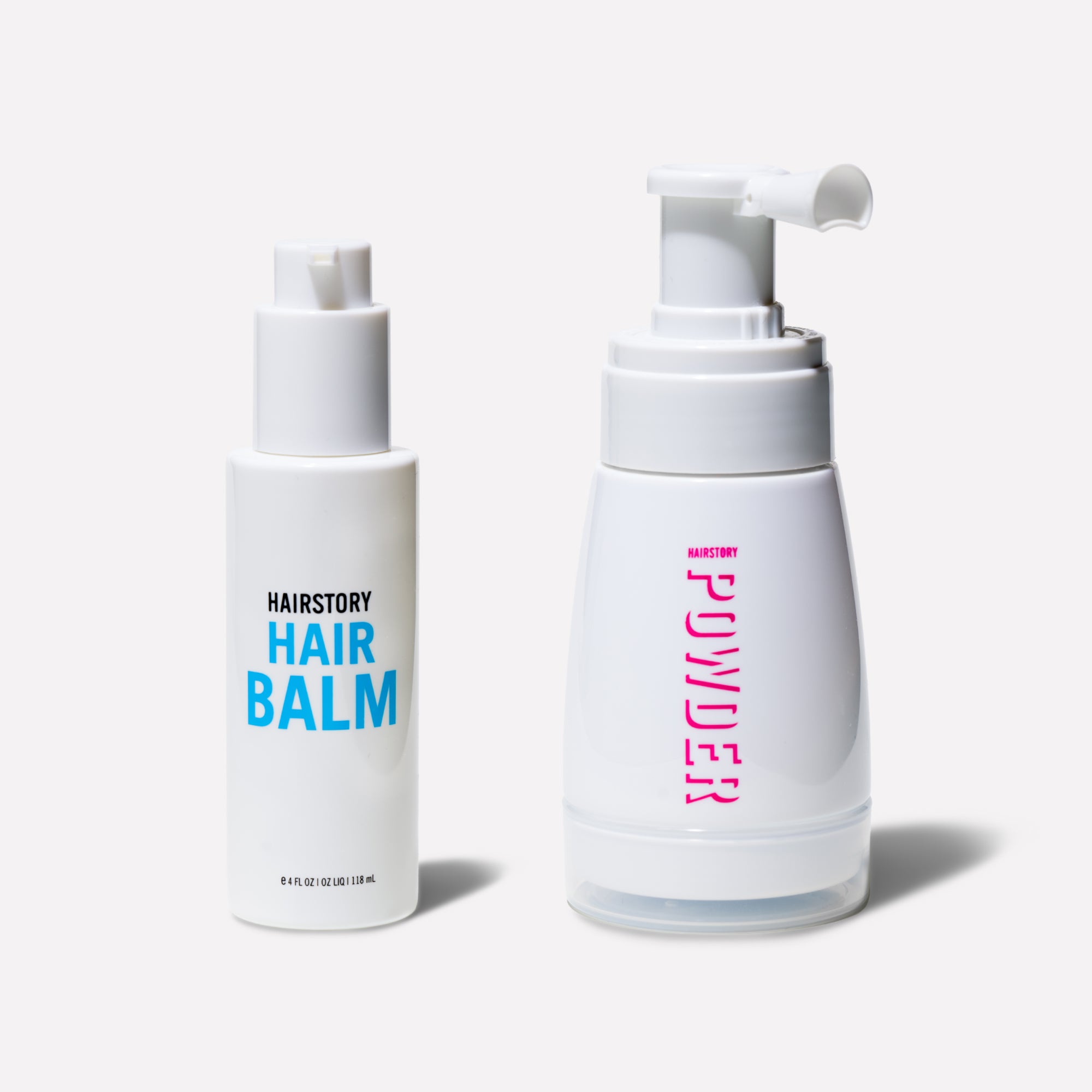When your hair is growing slowly, you wish you could speed up time. But when your hair is losing its grip and falling out, you wish time would stand still.
You might not want long hair, but you do want thick, healthy hair, right? It’s always a good time to learn hair growth tips – even if you’re balding.
Encouraging a healthy hair growth cycle is a combination of a healthy diet, a good massage technique, detergent-free shampoo, and knowing how – and how not – to keep hair well-groomed. But first, get your head around how hair actually grows.
HOW FAST DOES HAIR GROW?
On average, hair grows about half an inch a month, but some people’s hair grows half as fast or even at twice the speed. In general, hair growing from a man’s head sprouts faster than from a woman’s, but pregnancy can in some cases speed it along. Maybe you’re wondering how to add volume to men’s hair but sometimes even something as simple as the time of year can play a role; typically, our hair grows a little faster in summer months and slower during wintertime.
Hair grows fastest between the mid-teen years and the late 20s and slows down as we age. Women’s hair can slow down considerably at the onset of menopause.
HOW DOES HAIR GROW?
It’s true there are all kinds of hair types. But every human scalp supports an average of 120,000 to 150,000 hair strands at any one time in three stages:
The first stage is called the anagen or ‘active’ phase, lasting from 5 to 7 years during which a hair bulb roots at the base of its follicle and starts to draw nutrients circulated by the blood. As the new strand reaches outward, it pushes its predecessor from the follicle, which dislodges and sheds.
The next stage is a transitional one called the catagen phase, lasting anywhere from a few days to a few weeks. The bulb detaches from its blood supply and takes a position higher up in the hair follicle, which shrinks around it. Though it is still anchored, it is vulnerable to being dislodged by scratching or tugging.
The last stage is a resting state called the telogen phase; little activity occurs inside the hair follicles except for preparing for another anagen phase and incubating a new strand. The follicles widen and hair strands will fall, along with 50 to 150 others each day. You can see a white bulb at the bottom of a shed telogen-stage strand compared to one that may have broken.
As we advance in age or experience natural hair loss, the anagen phase is shorter, which is why mature women may not grow hair to the length they were able to when they were young.
WHY DO MEN GO BALD?
It’s a myth that balding men have hyper-masculine levels of testosterone. While testosterone is a factor in hair growth – it does put fur on your chest – it doesn’t factor into hair loss on your scalp unless it is converted into dihydrotestosterone (DHT), resulting in male-pattern baldness (androgenic alopecia).
According to Harvard Health Publishing, DHT has also been linked to prostate disease. While it stimulates the normal growth of prostate cells in adolescence, it contributes to benign prostatic hyperplasia (BPH) in many older men. The link between male pattern baldness and BPH resulted in a medication to treat both conditions in varying doses: Finasteride blocks the conversion of testosterone to DHT; as Proscar, it helps some men with BPH, and as Propecia, it helps some men with androgenic alopecia. Another drug, dutasteride (Avodart), has a similar effect on BPH but is not approved for baldness.
It’s a myth that balding men have hyper-masculine levels of testosterone. While testosterone is a factor in hair growth – it does put fur on your chest – it doesn’t factor into hair loss.
Scientists in Australia found that men with bald spots at the top of their heads were one and a half times more likely to have prostate cancer than those without bald spots. In contrast, there was no link between a receding hairline and cancer.
A Harvard Physicians’ Health Study found that men with bald spots were more likely to develop coronary artery disease than men with full heads of hair. Mild baldness was linked to a 23% increase, moderate baldness to a 32% rise, and severe baldness to a 36% increase in risk. Frontal baldness was not associated with risk.
WHY DOES HAIR GROW SLOWLY?
Protein Deficiency: The majority of a hair strand is composed of keratin, a protein that also composes skin and nails. Insufficient protein in our diet can make it less robust than ideal by compromising the formation of keratin and decreasing the level of iron – also essential to faster hair growth.
Blood-sugar: Spikes in sugar can lead to the release of insulin, and if you are insulin resistant, it isn’t absorbed by cells optimally. This has been linked to hair loss, possibly because it causes hair to enter the catagen phase prematurely.
Medications: Taking antidepressants, pain-relievers, blood thinners, and beta-blockers can result in slowed hair growth and loss.
Stress: When under stress, we often take shallow breaths and take in less oxygen. What we do inhale goes to support the most vital organs first – the heart, lungs, and brain – and less oxygen is available for less essential parts of the body, including hair.
Disease:As the body fights severe diseases, its resources are re-allocated and scalp may get the signal to enter the resting phase and hair regrowth may temporarily stop until recovery.
COVID-19:A survey of COVID-19 survivors found that 32% of respondents reported hair loss as a side-effect of the virus, or simply as a result of going through stress associated with the virus. A recent survey of 1,000 adults found nearly two in five experienced hair loss as a result of quarantine-induced stress.
Mechanical Damage: Hair is delicate, and heated styling tools, sharp fingernails, and stiff brush bristles can injure the scalp and make it less able to support healthy growth. Even how often men wash their hair plays a role. In addition, wet hair is at its most fragile, and aggressively combing out post-wash tangles is likely to break it.
Chemicals: Cleansing, conditioning, and hair color products with harsh chemicals are a recipe for dry hair and thwart the natural protective properties of sebum, and make growing hair more challenging than necessary. While you decide on pomade vs wax keep an eye on those ingredient lists.
HOW TO MAKE HAIR GROW FASTER
Diet: Healthy hair growth requires healthy nutrition and a sufficient intake of protein, vitamin C, biotin (vitamin H), omega-3, niacin, iron, and zinc from fish, eggs, avocados, sweet potatoes, berries, nuts, olive oil, legumes, and whole grains.
Circulation: The capillaries in the scalp are key, and it makes sense that the hair loss drug Rogaine was originally intended to treat heart disease. Clinical trials revealed an increase in hair growth as capillaries were opened up and blood flow increased. Blood supplies the follicles and hair roots with essential nutrients, vitamins, and minerals, and when its flow decreases, so does the hair growth rate.
Massaging your scalp well while you shampoo your hair will stimulate the circulation of blood. Be sure not to be so vigorous that you actually pull hair out, and be careful not to abrade your scalp with your nails. Some essential oils are reputed to promote blood circulation, so try adding Peppermint, Rosemary, or pumpkin seed oils to your massage, or look for them on ingredient lists.
Scalp exercises that focus on the eyebrows can lessen scalp tension and loosen the skin to let the blood flow more freely: Lift your eyebrows as high as you can and hold for a minute or two, then relax. Furrow your eyebrows deeply, and hold that for a minute or two, then relax.
The long and the short of it: Treat your scalp well, nourish your body well, and keep breathing deeply, and get those fingers moving to prevent thinning hair. If you’re having an inkling that healthy growth is more challenging than it needs to be, pay your doctor a visit.
* * *
Sources:
InformedHealth.org [Internet]. Cologne, Germany: Institute for Quality and Efficiency in Health Care (IQWiG); 2006-. What is the structure of hair and how does it grow? 2019 Aug 29. Available from: https://www.ncbi.nlm.nih.gov/books/NBK546248/
Publishing, Harvard Health. “Testosterone, Prostate Cancer, and Balding: Is There a Link?” Harvard Health, www.health.harvard.edu/mens-health/testosterone-prostate-cancer-and-balding-is-there-a-link-thefamilyhealth-guide
“How Fast Does Hair Grow? Facts and Healthy Hair Growth Tips.” Medical News Today, MediLexicon International, www.medicalnewstoday.com/articles/326764
Xiong, Qiutang et al. “Clinical sequelae of COVID-19 survivors in Wuhan, China: a single-centre longitudinal study.” Clinical microbiology and infection : the official publication of the European Society of Clinical Microbiology and Infectious Diseases, S1198-743X(20)30575-9. 23 Sep. 2020, doi:10.1016/j.cmi.2020.09.023

















































